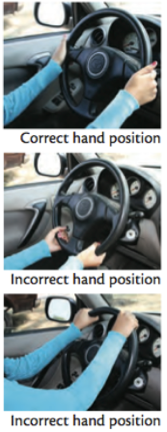Session 18 – Safe Driving Tips
SAFE DRIVING TIPS
No driver manual alone can teach you how to operate a vehicle or be a safe driver. Driving requires skills you can gain only through instruction and practice. The following offers some basic driving information.
Basic Driving
Starting
Check your vehicle owner’s manual for how to best start your vehicle. Make sure the parking brake is on before you start the vehicle. If your vehicle has a manual transmission, it must be in neutral. In some vehicles, the clutch must be depressed. For a vehicle that has an automatic transmission, you must put the shift selector in “park.” On some vehicles, the brake pedal must also be depressed.
Accelerating
Accelerate gradually and smoothly. Trying to start too fast can cause the drive wheels to spin, and will cause your vehicle to slide. With a manual-shift vehicle, practice coordinating use of the clutch and accelerator to prevent killing or over-revving the engine when shifting gears.
Steering
Both hands should be on the steering wheel, except when making necessary adjustments to the driving controls. To help avoid injury if your vehicle’s air bag goes off, it is best to hold the steering wheel with your right hand at 3:00 and your left hand at 9:00. Never drive with your hands at the top of the steering wheel, or with your hands, thumbs, fingers or arms resting on the center of the steering wheel. It is recommended not to wrap your thumbs around the steering wheel spokes. When you complete a turn, straighten out the steering wheel by hand. Letting it slip through your fingers could be dangerous.

Look well down the road (10 to 15 seconds ahead) and on both sides of the road, not at the road just in front of your vehicle. Look for traffic situations where you will need to steer before you get to them. This way, you have time to steer smoothly and safely.
Stopping
Be alert so you know well ahead of time when you will need to stop. Stopping suddenly is dangerous and usually means a driver was not paying attention. When you brake quickly, you could skid and lose control of your vehicle. You also make it harder for drivers behind you to stop without hitting you, especially if the road is slippery and/or there is a large vehicle behind you that cannot stop quickly.
Try to avoid panic stops by seeing events well in advance. By slowing down or changing lanes, you may not have to stop at all and if you do, you can make a more gradual and safer stop.
Do not coast (transmission in neutral or clutch depressed) while driving. Stay in “gear” so you have the braking power of the engine available.
